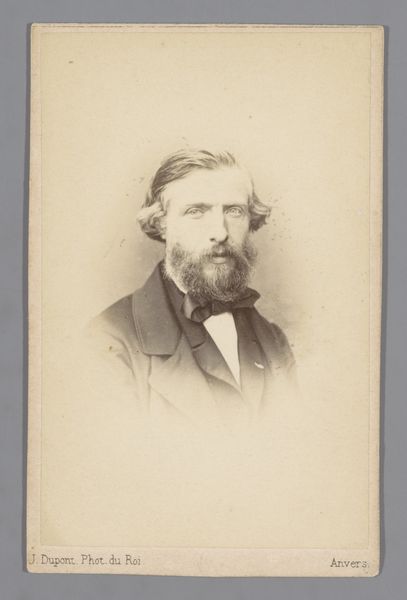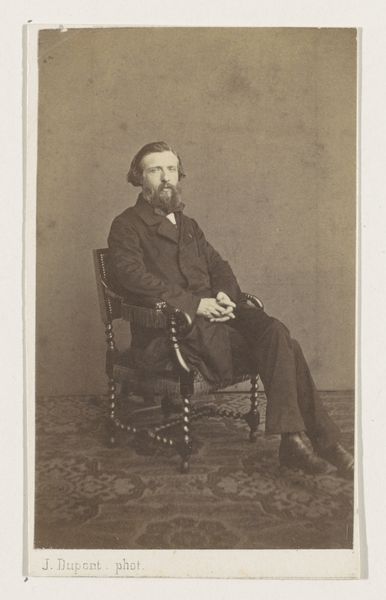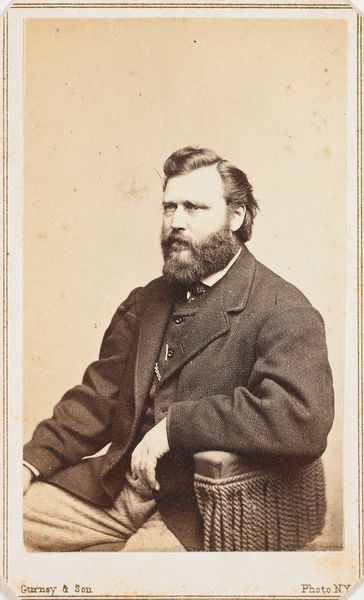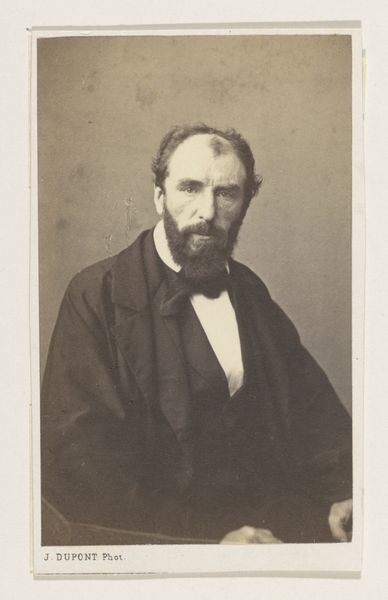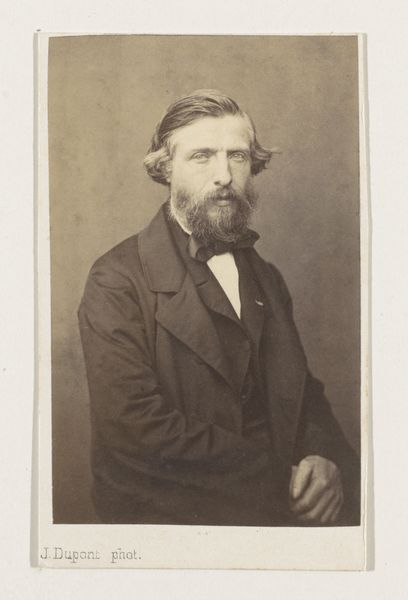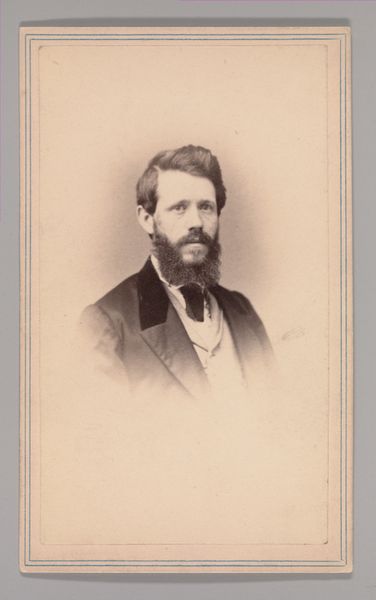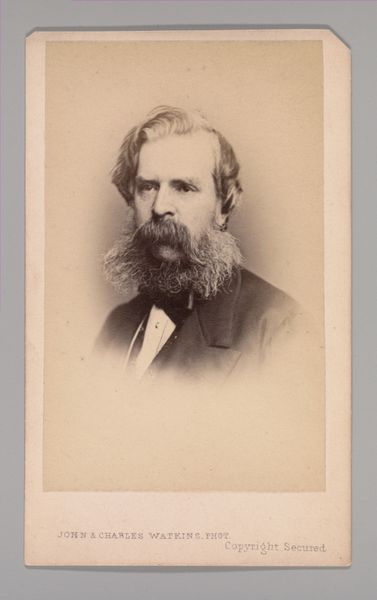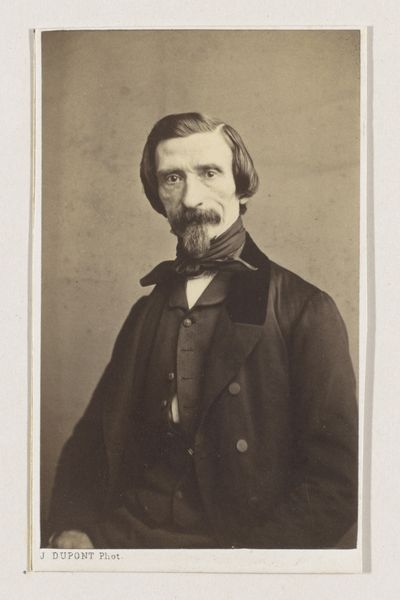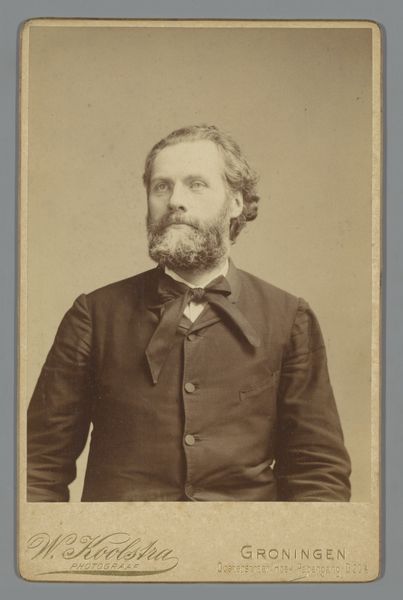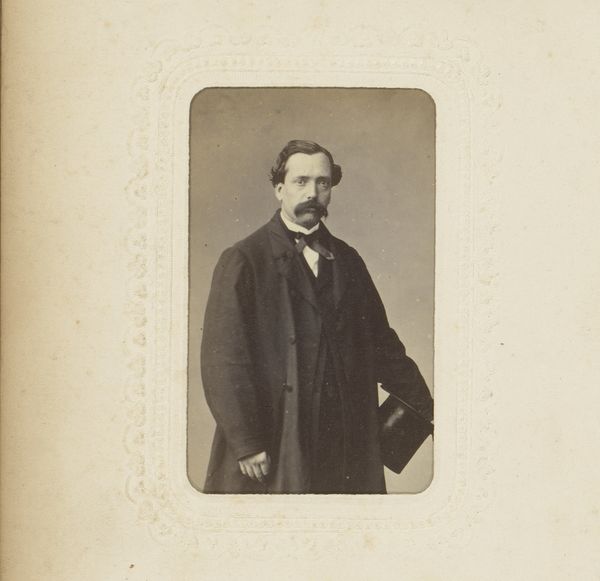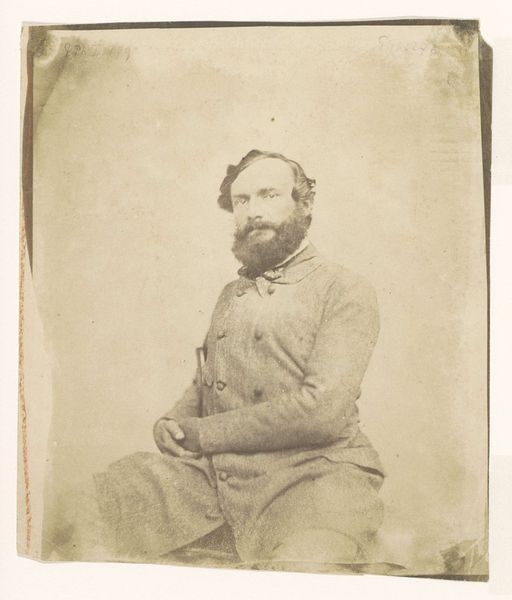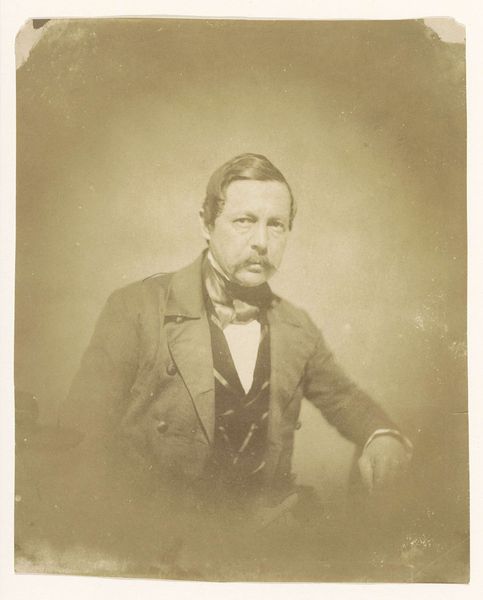
Dimensions: 17.3 × 13.4 cm (image, appro×.); 21.6 × 16.6 cm (plate)
Copyright: Public Domain
Curator: Here we have an intriguing untitled portrait from the Art Institute of Chicago, dating from around 1850 to 1900. It’s a daguerreotype, an early photographic process, of a man. Editor: There's a solemn dignity to this image, isn’t there? The oval frame focuses your eye so intently on his face; his gaze feels both piercing and… well, melancholic. It's a heavy stillness. Curator: Indeed. The daguerreotype was quite groundbreaking in its time. Imagine the labour and material precision it took. A polished silver-plated copper sheet, meticulously prepared and exposed to light, then developed using mercury vapor. Each image is unique, unreproducible. Editor: Mercury! Sounds like alchemic wizardry! You almost sense that magic in the silvery sheen of the plate. He feels so present. What sort of man do you think he was? Something about the set of his jaw and his unreadable look – Curator: It's hard to say definitively. This form of photography was becoming accessible to the middle class by the latter half of the 19th century. So while this might be a simple commemoration of himself, his very participation in the daguerreotype process suggests a particular connection to emerging technologies of the era. And the chain – Editor: A watch chain! A little gleam, a status symbol of industriousness perhaps? I bet he tells some amazing tales… if only he could speak from inside that oval frame. I almost want to offer him a pipe, or pour a drink. Curator: Consider, too, how labor shifted alongside technological advancements in portraiture. The power dynamic is present, visible. The man would sit still for a very long period so his portrait can get captured. Editor: Now, when you put it that way, that changes how you see his intense gaze. He’s not just posing; he’s working, fulfilling his place to make something exist. A physical exchange happened when he posed, the end results feels even heavier somehow. Curator: Precisely. Every detail in this daguerreotype tells a story about materiality, industrial expansion, and human agency in early photography. Editor: Right. It makes one reconsider just what stories of their humanity he takes into his frame.
Comments
No comments
Be the first to comment and join the conversation on the ultimate creative platform.
